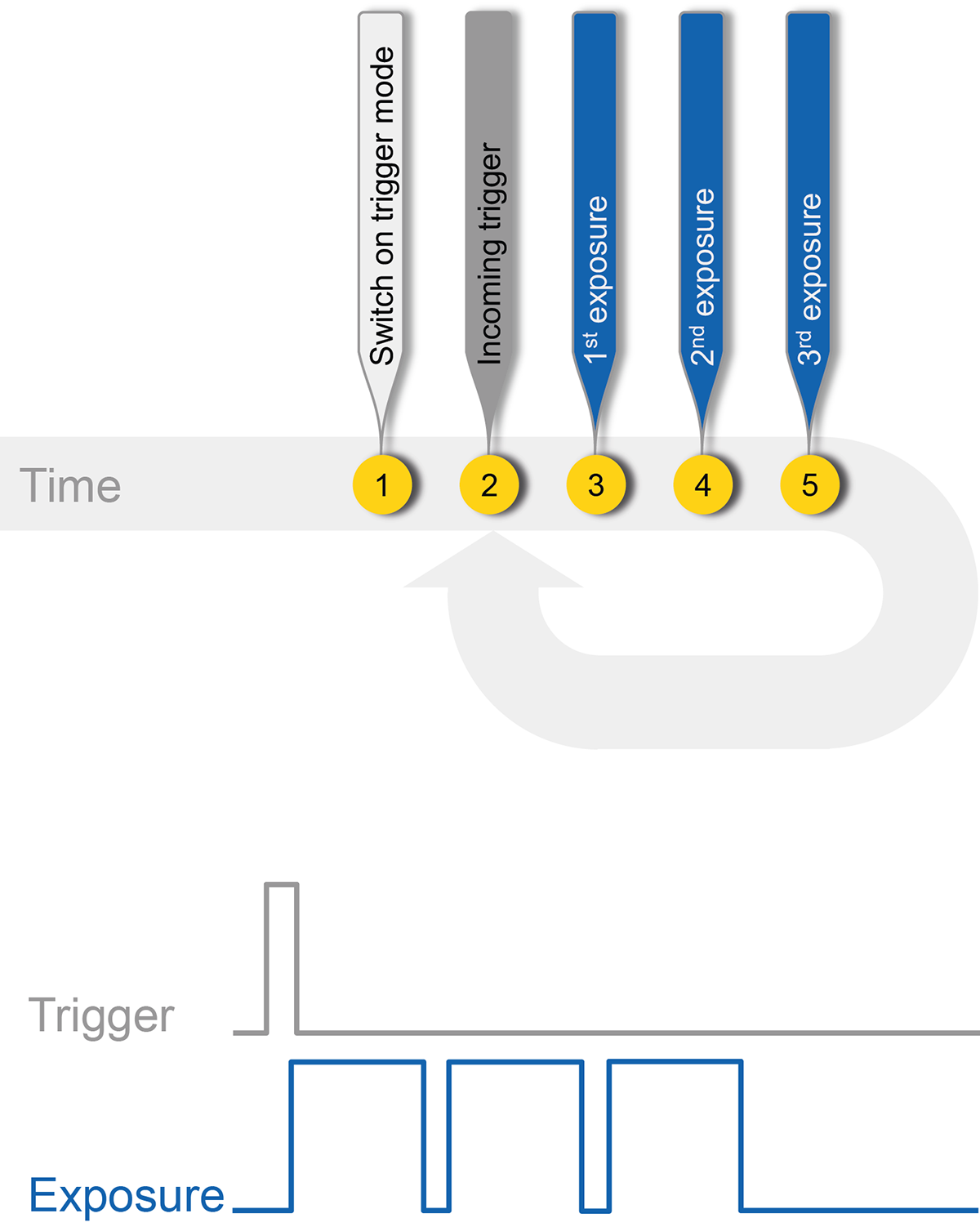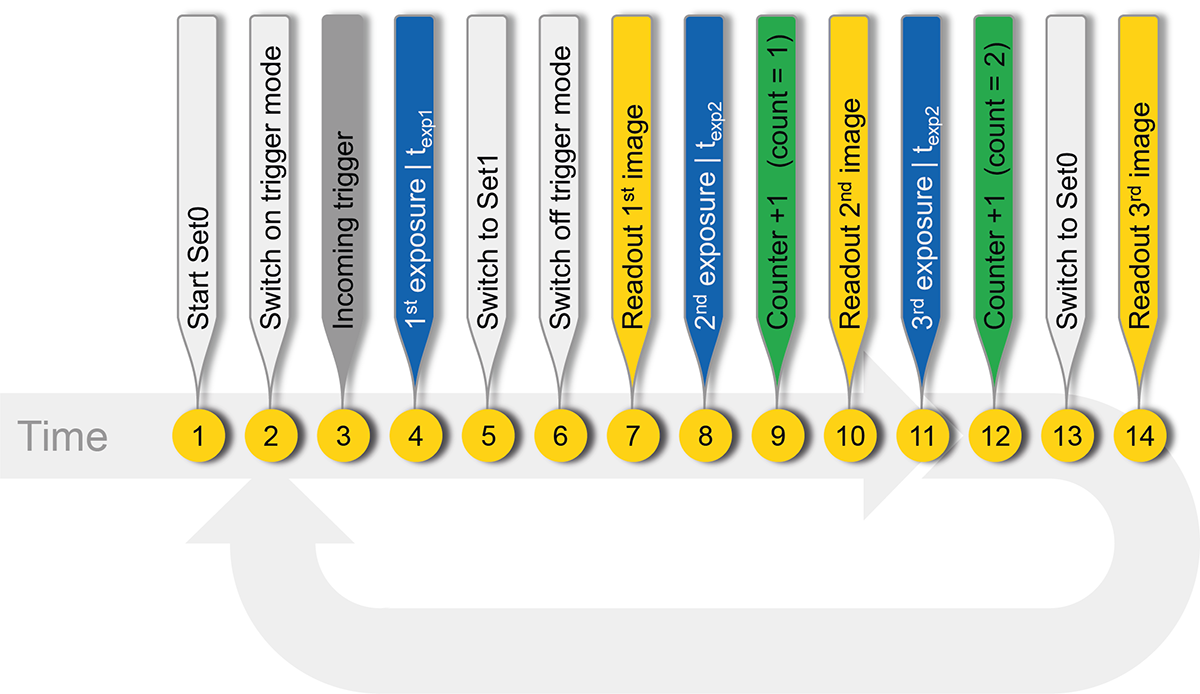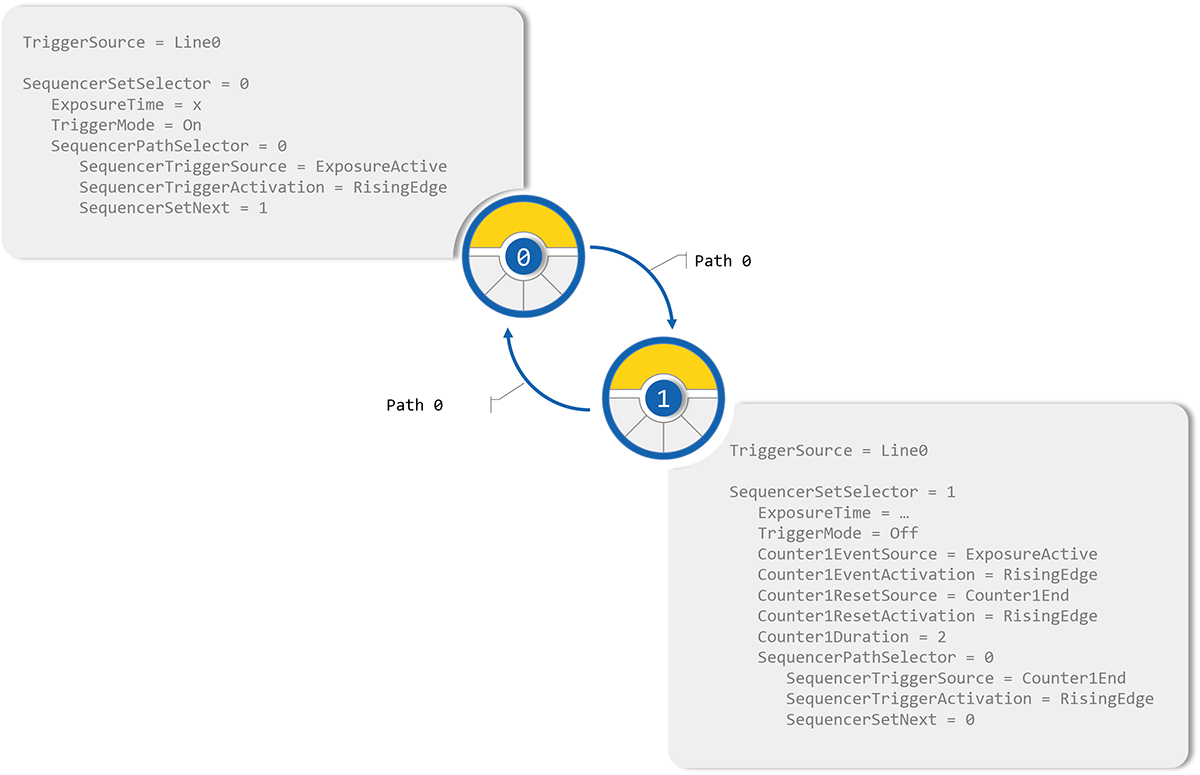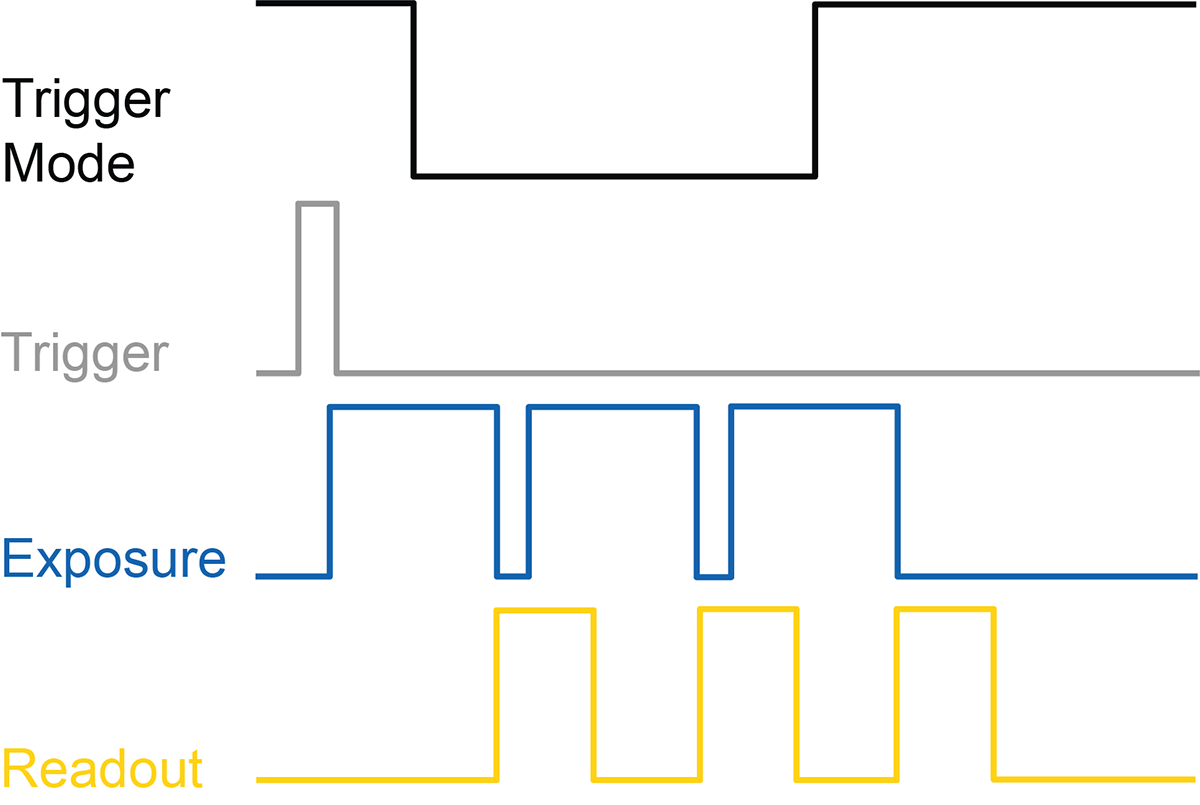Multiple acquisitions
The described sequence shows the approach of capturing multiple images by using one incoming trigger.
Desired camera behavior

The theoretical approach is setting the camera to trigger mode and capturing two images with each incoming trigger signal at the same exposure time.
Sequencer procedure concept
Taking into consideration the sequencer basics makes sequencer parameterization a lot more complex than originally expected:
- Since acquisition of the 1st image is hardware- triggered, the 2nd and following images must follow automatically and immediately at different exposure time, reason why two different sequencer sets are indispensable.
- The first set (Set0) contains the necessary parameters for the Trigger Mode configuration as well as the desired exposure time for the 1st image.
- The 2nd set (Set1) sets the camera back to free-running operation and configures the exposure time and the desired / required counter data.
- In addition, both sets need to provide sequence set and path related information.

Implementation
The sequence is expected to run at the incoming trigger, reason why a TriggerSource must be defined and why in the example Line0 was added.
First sequencer set
In Set0 the sequencer controllable camera features are ExposureTime and the TriggerMode that is turned on.
The sequencer set and path related features are:
SequencerPathSelector = 0
Defines the path for switchover to the next sequencer set. Here it is Path0.
SequencerTriggerSource = ExposureActive
Defines the internal or external signal that is used as sequencer trigger source, here the internal signal ExposureActive.
SequencerTriggerActivation = RisingEdge
Defines the signal status change triggering switchover to the next sequencer set. In the example it is the RisingEdge.
SequencerSetNext = 1
Defines which sequencer set is next in this path, in the example Set1.

Second sequencer set
Set1 contains the ExposureTime for all recorded images (except the 1st one) and switches the TriggerMode off. Besides that the counter for the image repetition is configured as follows:
Counter1EventSource = ExposureActive
Defines the internal or external signal that is used to control the counter.
Counter1EventActivation = RisingEdge
Defines the signal’s status change that triggers the counter, here RisingEdge was selected.
Counter1Duration = 2
Defines the number of images that should be recorded within this sequencer set.
Counter1ResetSource = Counter1End
Defines the internal or external signal used to reset the counter to 0.
Counter1ResetActivation = RisingEdge
Defines the signal’s status change that resets the counter, here RisingEdge was selected.
The sequencer set and path related features are:
SequencerPathSelector = 0
efines the path for switchover to the next sequencer set. Use Path0 to go back to Set0.
SequencerTriggerSource = Counter1End
Defines the internal or external signal used as sequencer trigger source, here the internal signal Counter1End, that features a rising edge once the counter has reached.
SequencerTriggerActivation = RisingEdge
Defines the signal status change triggering sequencer set change, here the RisingEdge.
SequencerSetNext = 0
Defines the sequencer set that will be next when this path is used. Use Set0 to go back..
Result

The figure shows the resulting image acquisition that matches the desired camera behavior.
Related topics
- Application note: Sequencer introduction
- Application note: Sequencer realization of a double shutter operation
- Software example: Sequencer programming for VCXG cameras – multiple acquisitions on one incoming trigger
Support
Please contact our Technical & Application Support Center with any questions.
Phone: +49 3528 4386 845
E-mail: [email protected]